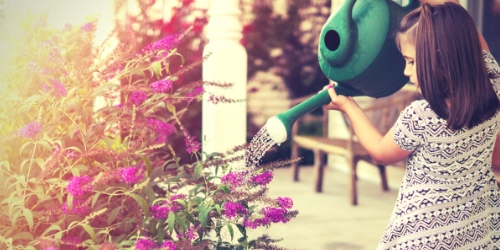Jennifer Ward suggests many ways that a parent can use this activity to support home schooling (see Page 6 of I LOVE DIRT)
As an RDI consultant, I used this activity very successfully with young children diagnosed with ASD and Down’s syndrome to support the development of experience-sharing, co-regulation, and attention shifting. I have also used the activity with older, more skilled children and young adults to teach the concept of dynamic categorization and encourage creative thought.
Here are some of the framing adaptations I made to this activity when using it as a RDI “tool”.
RDI and A Bouquet Of Color
- Go outside with your child and search for the many different colors that can be found in nature.
- Give your child the job of ‘collecting’ the object that you draw his/her attention to.
- Use nonverbal communication to draw your child’s attention to a colorful object. Use proximity and amplified gaze to help your child notice what you are looking at.
- Change jobs. Give your child an opportunity to search out and share the colorful objects in nature that he/she notices with you.
- Once you have collected a number of samples, stop and sort them into color groups.
- Consider using Crayola way crayons to draw attention to the different shades of color that exist and to help your child understand that categorization is a dynamic process.
- Help your child discover that categories can be organized and reorganized (i.e. objects that are initially sorted into the green group can later be resorted into light green, blue green, etc.).
- Take pictures of the different colored objects that you discover and use them to create a colorful collage. Collaborate when choosing pictures. Use nonverbal communication and amplified gaze to draw your child’s attention to specific pictures.
